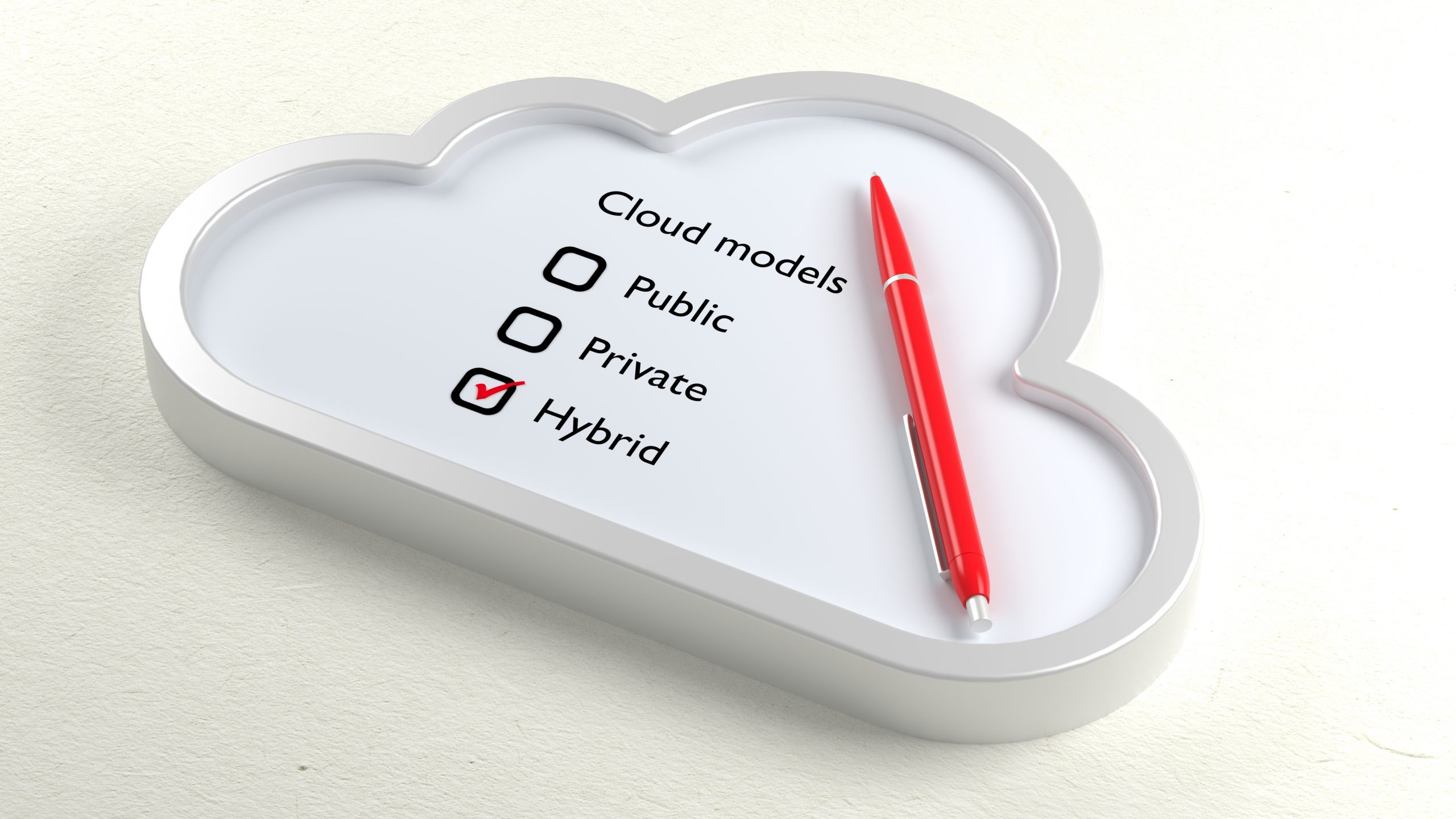Cloud services have proved to be an undeniable requisite and a positive shift for businesses of all sizes, with a high possibility of further acceleration in the near future.
There are various Cloud Services to fit different business requirements - from storage to computing, from AI to machine learning- not to mention the availability of SaaS (Software as a Service) platforms and solutions. Nowadays, software and IT infrastructures have reached a high level of complexity, and in this context, choosing the right mix between on-premise IT services and infrastructure and public and private cloud services, in order to find the optimal solution for your operational context, is a must.
Cloud-related debates have now moved from analysing of the pros and cons of a cloud approach to figuring which cloud approach will be most effective for specific business requirements.
Public Cloud
By now everyone knows the great advantages of public cloud in terms of costs and efficiency, of relying on a provider which provides you with an adequate Iaas (Infrastructure as a Service) or Saas solutions. One of the most significant advantages is the reduction of the management costs since the adoption of an IaaS implies a shift of costs from capital expenditure (Capex) to operating expenditure (Opex), An adequate IaaS infrastructure therefore allows you to significantly reduce the initial IT costs.
Beyond the economic advantages, there are also technical considerations to be done, which can even be more relevant: scalability, reliability, automation, continuous updates, non-existent obsolescence, and much more.
Public cloud services can work side-by-side to infrastructure hosted within a data centre, through a hybrid cloud set-up, therefore allowing for better manageability of the related physical hardware equipment, the maintenance costs of the hardware and its maintenance
Nowadays, from a technical point of view, there are very few services that cannot be migrated to the cloud.
The main services that are particularly suitable for a public implementation are the following:
Saas (Software as a Service):
This is a software distribution model in which a cloud provider hosts applications and makes them available to end-users over the internet. Microsoft 365 is probably the most famous product which falls in this category, but there are also other types of applications, such as CRM (Customer Relationship Management, such as Salesforce or Hubspot) and ERP (Enterprise Resource Planning).
IaaS (Infrastructure as a Service):
This is a type of cloud computing service that offers essential compute, storage, and networking resources on-demand, on a pay-as-you-go basis. The IaaS enables you to avoid “important” investments which would eventually be necessary for building and maintenance physical infrastructure otherwise. In this scenario, the provider is responsible for creating and maintaining the infrastructure, while the user makes use of a powerful, modern, efficient, and highly scalable system.
PaaS (Platform as a Service):
This is the third cloud computing model, in that it provides customers with a complete cloud platform—hardware, software, and infrastructure—for developing, running, and managing applications without the cost, complexity, and inflexibility that often comes with building and maintaining that platform on-premise. The PaaS provider hosts everything—servers, networks, storage, operating system software, databases, development tools—at their data centre. Typically, customers can pay a fixed fee to provide a specified amount of resources for a specified number of users, or they can choose 'pay-as-you-go' pricing to pay only for the resources they use.
Nowadays you can either manage your IT infrastructure or delegate it to a service provider. A cloud service can effectively support the entire infrastructure, managing for example, Web Servers, Load Balancing, Failover, High Availability, and allowing you to manage everything from a single monitoring environment.
Private cloud
Although there are many advantages when using the public cloud, companies are usually reluctant to assign 100% of their IT resources and applications on such platforms. Also, as is often the case especially at migration stage, it is usually easier from a technical point of view to deploy a private cloud, rather than migrating to a completely public solution.
Nowadays, it is possible to create private cloud environments from which you can deploy almost any kind of applications. The private cloud therefore remains an interesting option for all those companies that might have concerns related to migrating to a Public Cloud.
There might be several scenarios where a Private Cloud fits best. By way of example: a company that uses applications that require high performance at a technical level.
Another example would be when main applications have a very predictable usage model, with low management and storage costs, and therefore the migration to the public cloud may not be the best option financially.
A third use case is security and compliance – it is usually best-practice to adopt a private cloud model if you want the highest degree of compliance and security for your data.
In all these instances, the data centres, with cloud solutions at local level, implemented with virtualization systems such as VMware, still might be the best solution.
Hybrid Cloud
Given all the above consideration, the best solution is often to implement a hybrid cloud strategy within a certified data centre.
As the Latin saying goes, “in medio stat virtus”, virtue stands in the middle.
Hybrid architectures are very appealing for companies that want to migrate gradually. A hybrid system is presented as an excellent solution even in such circumstances where there are “institutional” concerns related to security and privacy of the data. A hybrid system allows for a partial migration while keeping certain data on-premise and other data in the public cloud.
Ultimately, technology enables us to solve the same problem in diverse ways: the choice of the implementation strategy is therefore based on a series of technical, economic, and even "ideological" considerations. There is no right or wrong answer, but you can start off with considering the following points before deciding which cloud model will best suit your needs:
- Identify the main use case: What is the purpose and the objective of the project (disaster recovery, backup, collaboration, primary storage, etc.)? It is necessary to define the strategic objective and draft a plan of how to reach this.
- What information will be stored: is it data in use by users? What kind of applications do they power? Do these applications also work in cloud environments?
- Identify the type of storage: If you have to support a project that provides data available to cloud native applications, probably object storage via public cloud will be the most suitable solution.
- Compliance and Security: What type of data do you deal with? If you deal with highly sensitive and private data, it might be that storing it in the public cloud is not allowed from a compliance perspective. When a strict control over your data is required, a public cloud with servers in other countries might not be the best solution and is often illegal. A hybrid cloud setup set on a private platform enables organisations to actively restrict access externally and internally. However, most of today’s cloud providers offer maximum-security options, at a cost, to ensure that your data is stored securely. Depending on company policies one or the other is more suitable.
- Scalability Requirements: A public cloud can scale exponentially within minutes. This flexibility in available storage can be beneficial if you are dealing with volatile data streams that need to be processed and stored. When you have a private cloud on premise, scaling up often requires additional hardware which can both be time-consuming and expensive.
- Available Budget: Of course, budget is a key factor to consider. For example, installing a large Hadoop cluster on premises requires substantial hardware, employees to operate and manage it, as well as maintenance costs. A hybrid cloud setup often works with a pay-as-you-go system, which ensures that you only have to pay for the equipment used, sometimes even charged on an hourly, or even shorter, basis.
How can BMIT Technologies help?
Every client we work with requires different solutions. So, we tackle each need with our expertise in technology, business strategy and innovation.
We propose and develop intelligent, secure infrastructure solutions, help build your internal capabilities and identify opportunities to enhance your business potential through the application of innovative technologies. This ensures a greater level of business management and progression.
Want to learn more about cloud? We can help you find the perfect fit for your business needs, get in touch with us or take a look at our various services.

